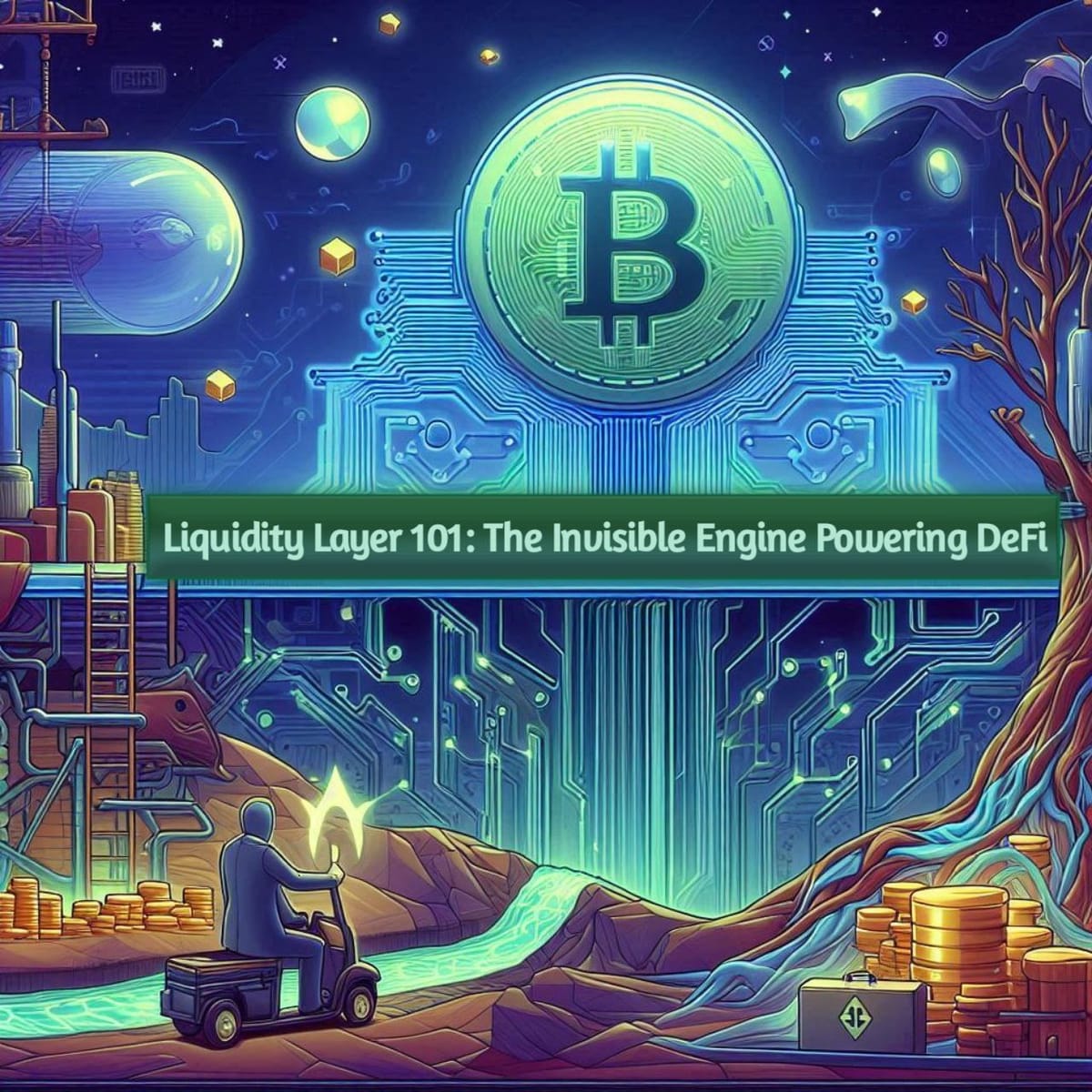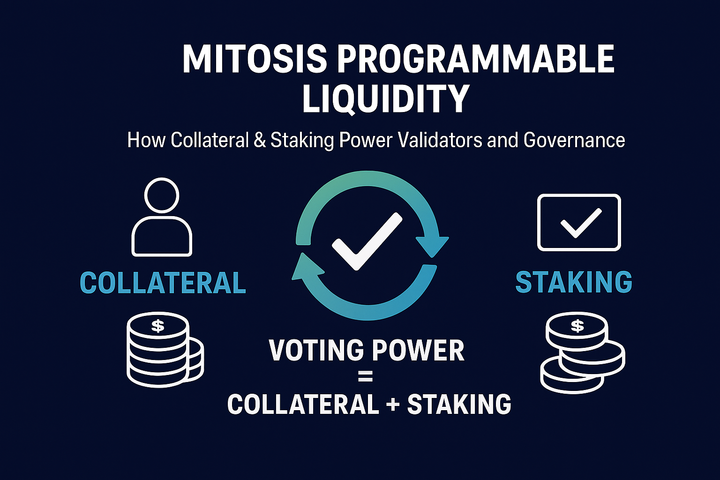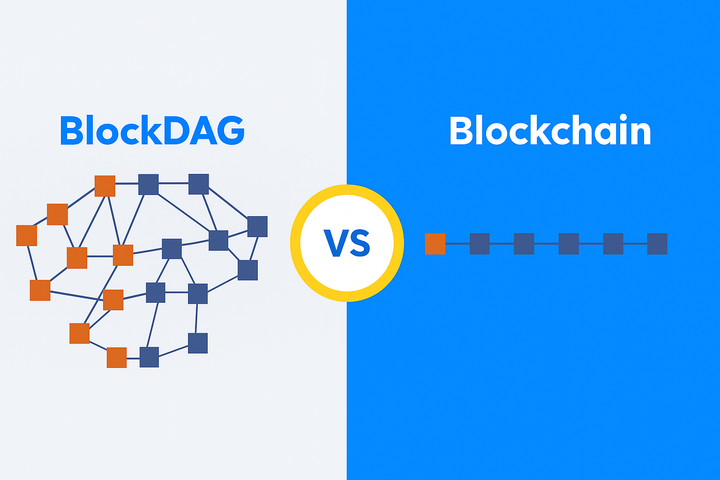Liquidity Layer 101: The Invisible Engine Powering DeFi

(And How Mitosis Is Reinventing It)
Why the Liquidity Layer Matters More Than You Think
While most users focus on flashy dApps, the real magic happens in the liquidity layer – the decentralized plumbing that:
- Routes your trades across chains
- Determines slippage and pricing
- Ensures capital efficiency
💡 Analogy: If DeFi were a city, the liquidity layer would be its subway system – unseen but essential for everything to function.
The 3 Pillars of Liquidity Infrastructure
1. Atomic Settlement
- Problem: Traders hate partial fills (e.g., swapping 1 ETH but only getting 90% of expected USDC)
- Mitosis Solution:
- MPC-Enabled Atomic Swaps: Either the full trade executes or nothing happens
- Example: Cross-chain ETH→SOL swap either completes on both chains or reverts
2. Fragmentation Solving
| Approach | TVL Efficiency | User Experience |
|---|---|---|
| Bridges | Low (~30% util) | Complex |
| Wrapped Assets | Medium (~50%) | Risky |
| Mitosis Pools | High (~85%) | Seamless |
Source: Delphi Digital Liquidity Report Q2 2024
3. Dynamic Pricing
- Traditional AMMs: Static curves (e.g., Uniswap’s x*y=k)
- Mitosis Innovation:
- Adaptive Curve Algorithm: Adjusts parameters based on:
- Cross-chain gas costs
- Volatility spikes
- Arbitrage opportunities
- Adaptive Curve Algorithm: Adjusts parameters based on:
How Mitosis’ Liquidity Layer Works Under the Hood
Step-by-Step: Routing a Cross-Chain Swap
- User Request: Swap 1 ETH (Arbitrum) for SOL (Solana)
- Path Discovery:
- Checks 5 potential routes (including via stablecoin pools)
- Selects optimal path with 0.3% estimated slippage
- Pre-Execution Checks:
- Validates solvency across chains
- Reserves liquidity via MPC signatures
- Atomic Execution:
- ETH debited on Arbitrum → SOL credited on Solana
- All-or-nothing settlement in <12 sec
⚠️ Key Innovation: Unlike bridges, no synthetic assets are minted – native assets move directly.
Why This Matters for Different Users
For Traders
- Better Prices: 17-23% lower slippage vs bridge-based swaps (Data)
- Fewer Steps: No manual bridging/wrapping
For LPs
- Higher Capital Efficiency:
- Single deposit → Multi-chain earnings
- Auto-compounding across 8+ chains
For Developers
Simpler Integration:
// Sample Mitosis Router Call
IRouter(mitosisRouter).crossSwap(
inputChain,
outputChain,
amountIn,
minAmountOut
);
The Future: Where Liquidity Layers Are Heading
- Intent-Based Routing
- Users specify what they want (e.g., "Best yield for 1 ETH")
- Mitosis handles the how automatically
- Institutional-Grade Liquidity
- Dark pools for large orders
- TWAP execution strategies
- AI-Optimized Pool Rebalancing
- Predictive allocation shifts before volume spikes
How to Engage with Mitosis’ Liquidity Layer
- Try It: Interactive Demo
- Build On It: Developer Docs
- Govern It: Vote on liquidity parameter changes via Governance Portal
Conclusion
As we've explored, the liquidity layer represents the critical infrastructure that makes modern DeFi possible. Mitosis isn't just participating in this space - it's fundamentally redefining what cross-chain liquidity can achieve.
Key Takeaways
- Atomic Execution ensures traders get exactly what they expect or nothing at all
- Native Asset Efficiency eliminates the risks and inefficiencies of wrapped tokens
- Adaptive Algorithms dynamically respond to market conditions in real-time
🌐 The Big Picture: Mitosis transforms liquidity from a chain-specific resource into a truly blockchain-agnostic utility - as accessible and reliable as electricity.
Why This Matters Now
With institutional adoption accelerating, the demand for:
- Predictable execution (no more surprise slippage)
- Capital efficiency (higher yields for LPs)
- Simplified UX (one-click cross-chain swaps)
...has never been greater. Mitosis' liquidity layer delivers on all three.
Your Next Steps
- Experience the difference: Testnet Demo
- Build the future: Developer Portal
- Shape the protocol: Governance Forum
The liquidity revolution isn't coming - it's already here. The only question is: Will you watch from the sidelines, or help build what's next?



Comments ()